Your First Writing Session
A handy guide to your first time writing in Novelcrafter.
Start writing
When you create your first novel, you are taken to a blank plan interface. To begin writing prose, all you need to do is:
- Go to the write interface

- Click add initial scene
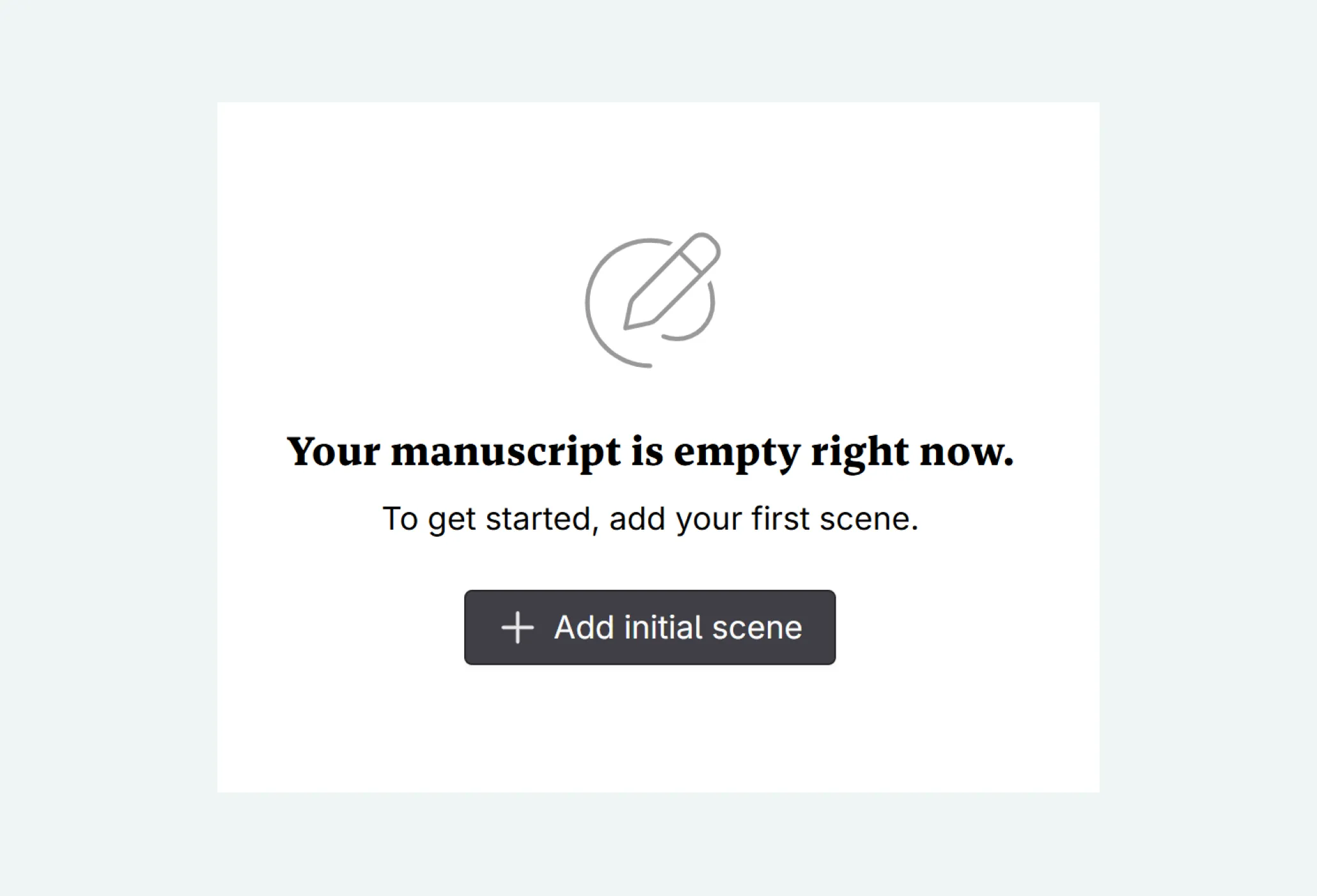
- Start writing!
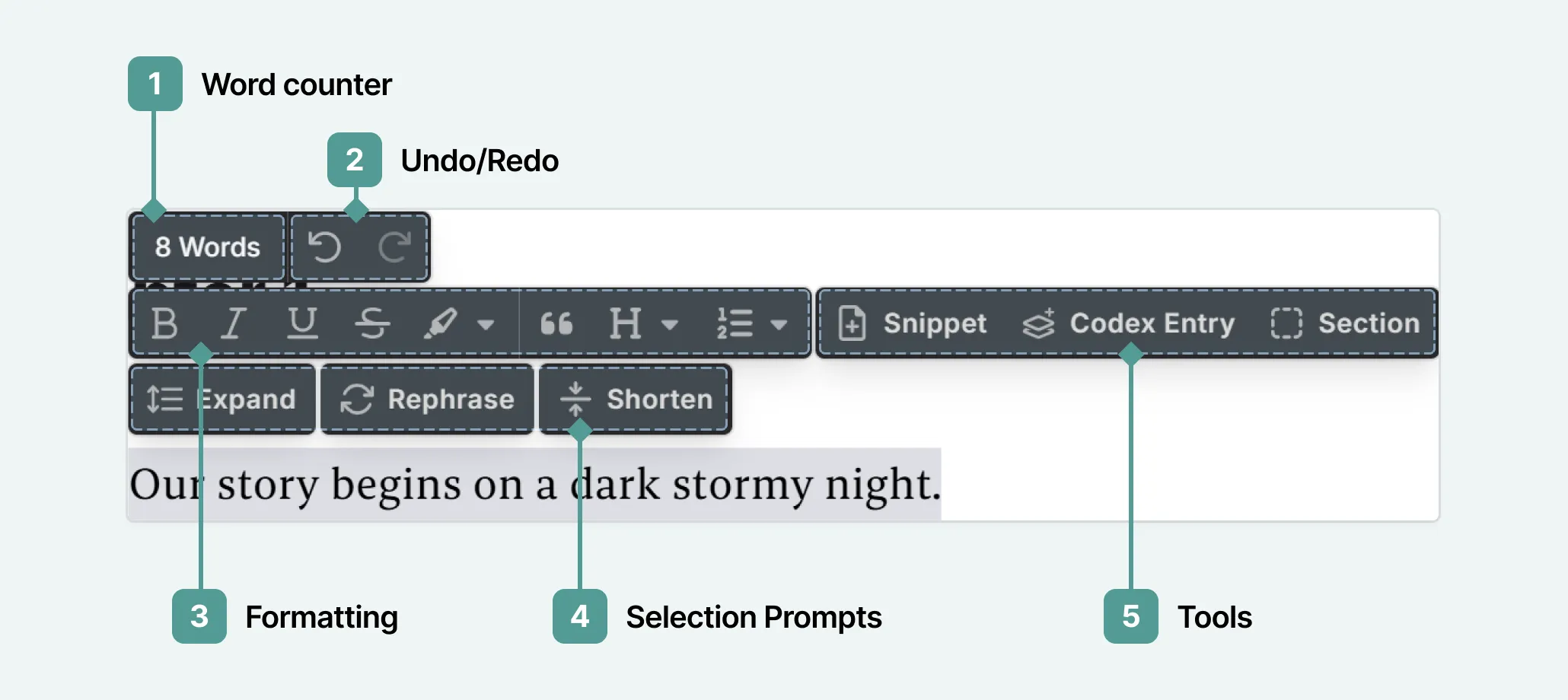
To navigate between chapters, you can either use the navigation timeline (1), or select the chapter from the dropdown menu at the top of the interface (2).
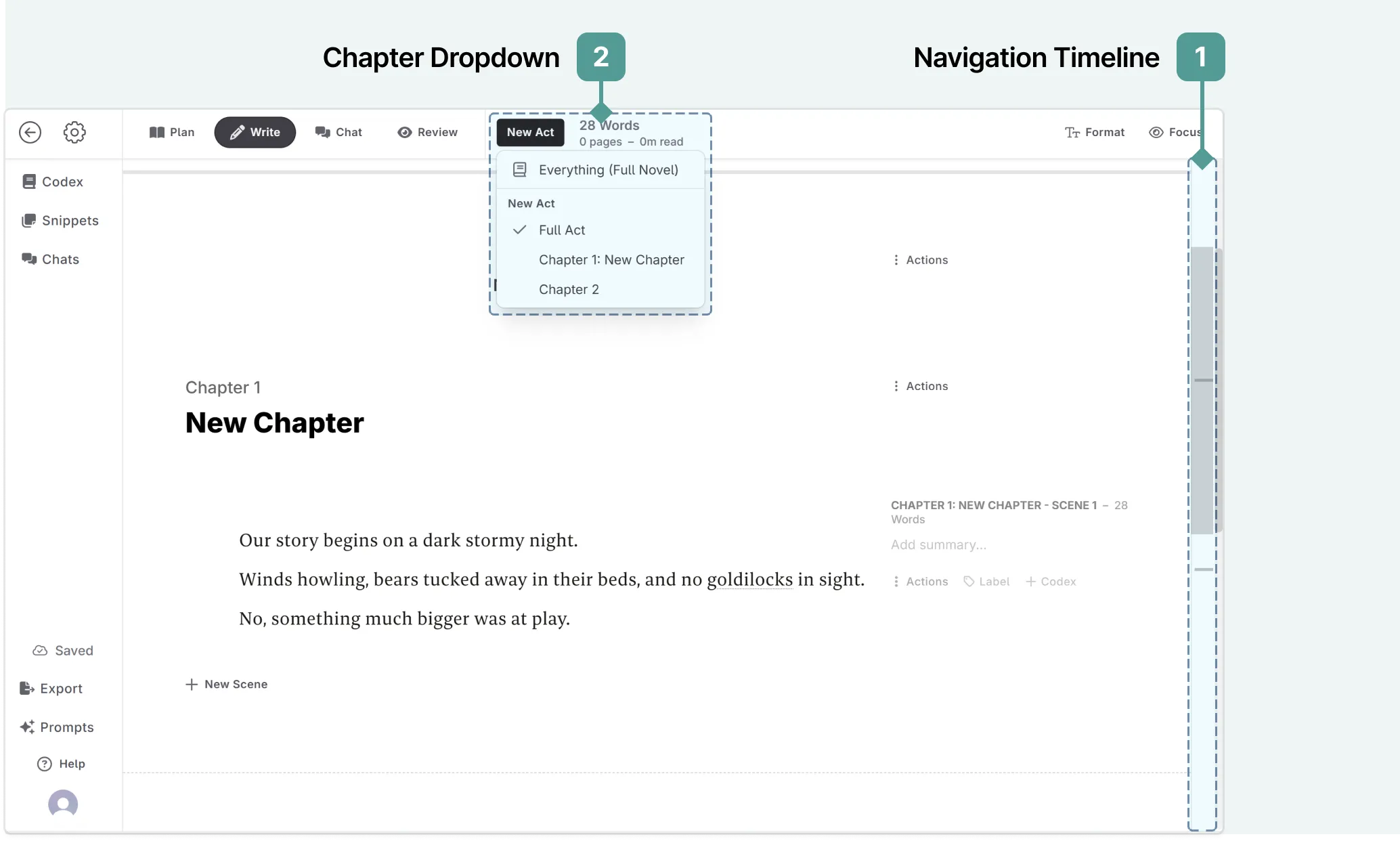
Saving your work
Novelcrafter automatically saves your work as you write, so you can focus on your story without worrying about losing progress.
Your work is automatically saved whenever you:
- Switch between different parts of your novel
- Leave a text field
- Take a brief pause from typing
You’ll see a small save indicator in the sidebar that lets you know when your work is being saved. Every three minutes, Novelcrafter creates a revision entry of your scene. For example, if you’re writing for an hour, you’ll have a saved revision for every three-minute interval (0-2 minutes, 3-5 minutes, 6-8 minutes, and so on), with each new revision overwriting the previous one for that 3 minute chunk.
Accessing revision history
You can access scene history from the actions menu.
- Click on the scene level actions menu.
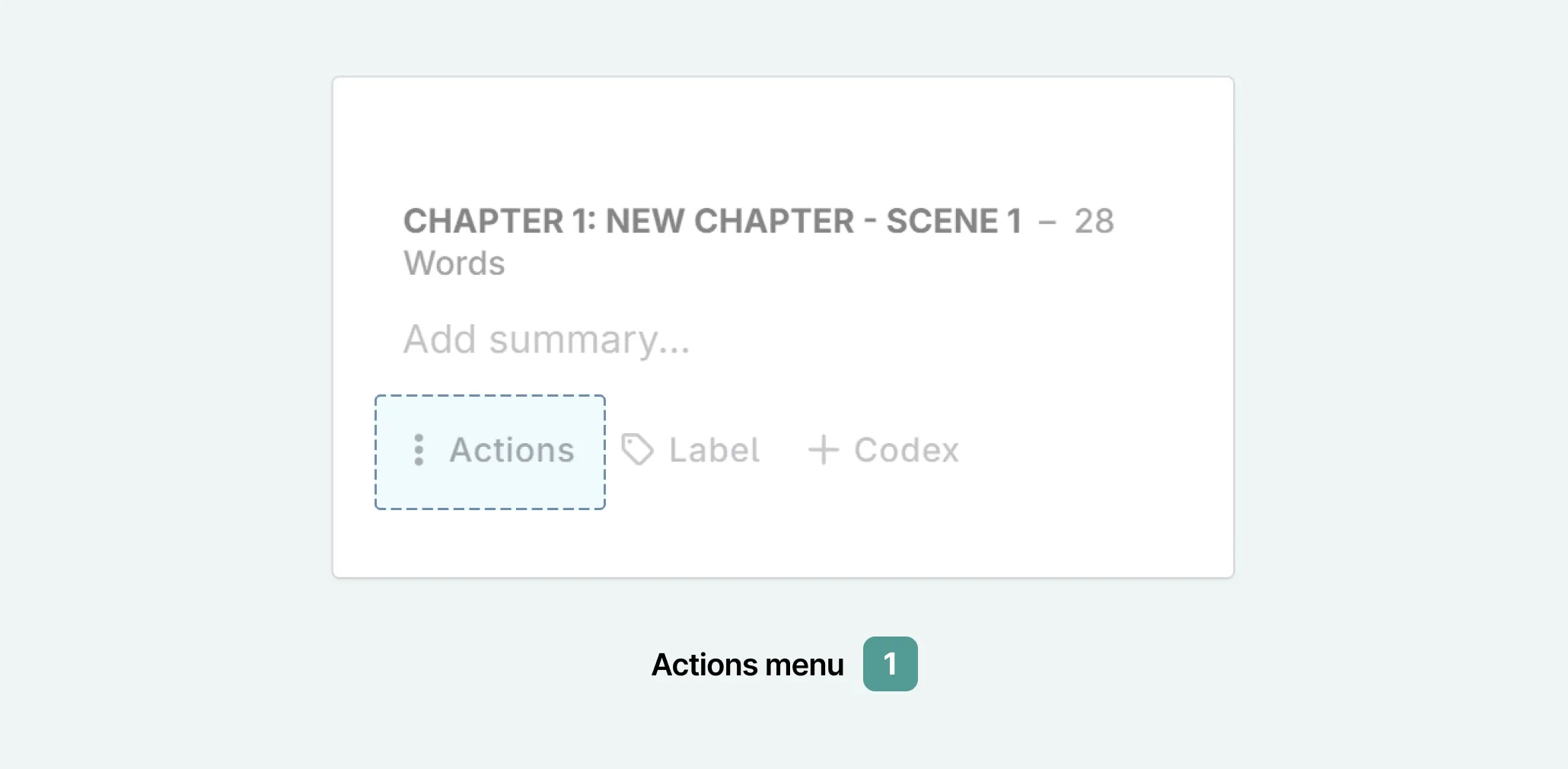
- In the history section, select scene contents.
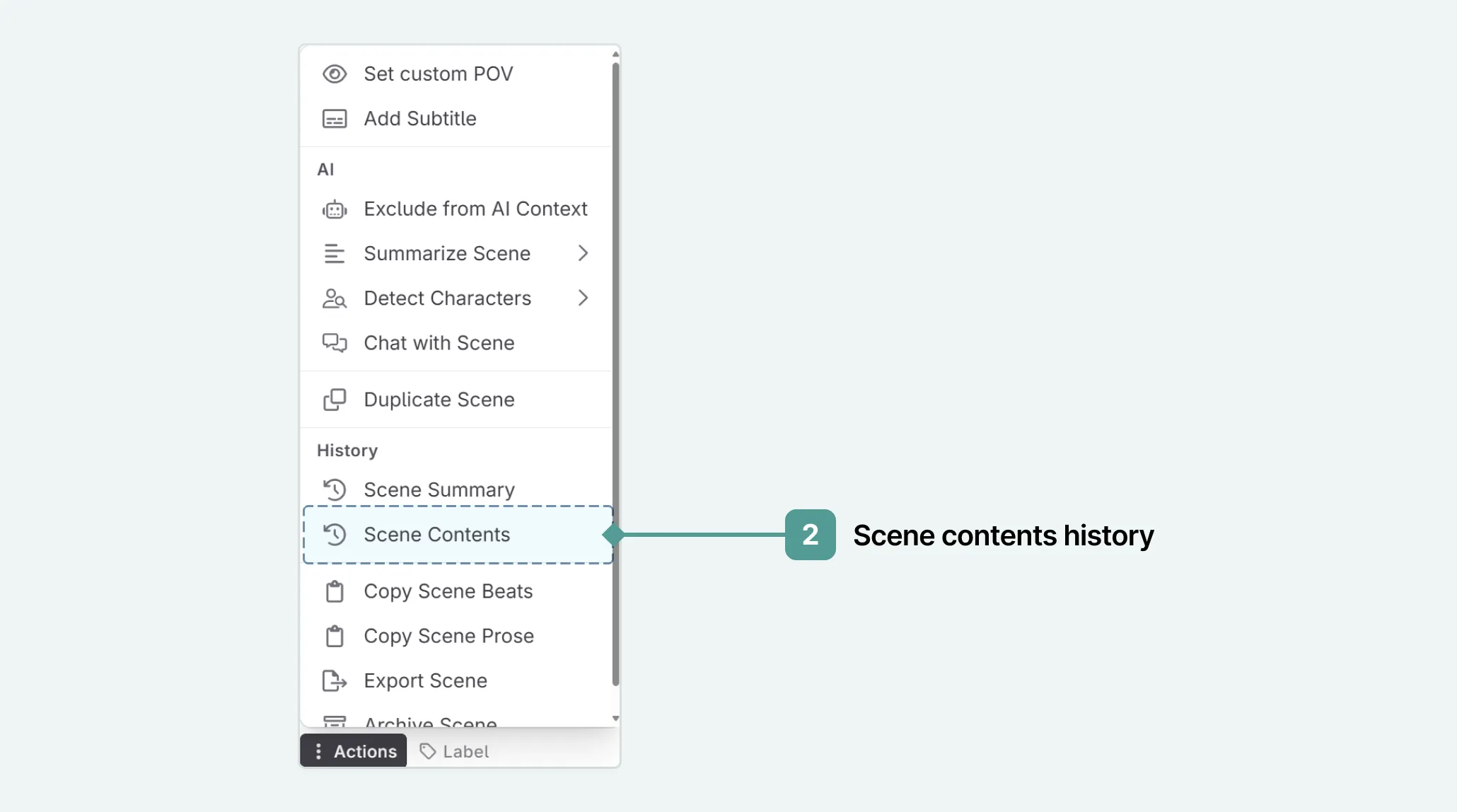
- You will now see your revision history, and can restore previous versions.
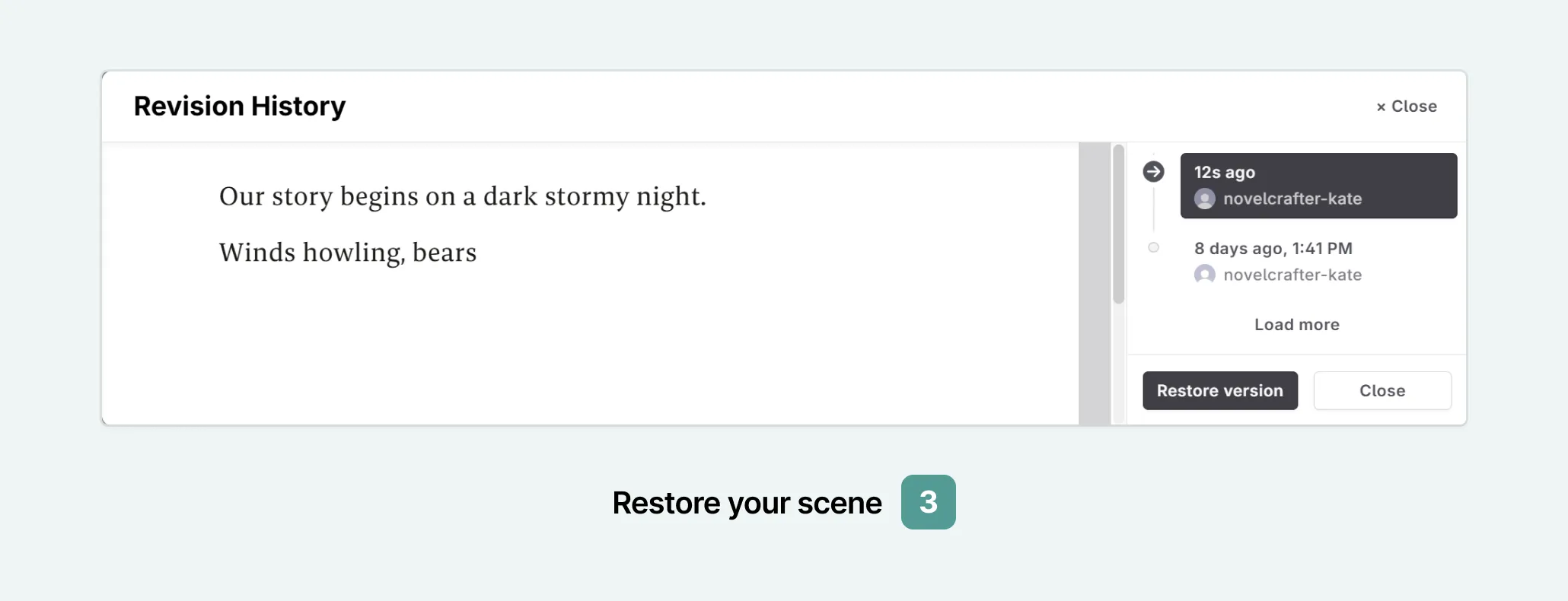
Managing your story
If you accidentally delete something, don’t panic! We can recover your data from any point within the last 30 days. You’ll need to submit a support ticket, giving us permission to access your story (and the novel details so we can find it!). While recovery might take a little time, your work isn’t lost forever.
Important: Avoid opening the same novel or series in multiple browser tabs, even across different devices. While Novelcrafter will save your changes, working in multiple tabs simultaneously could result in you overwriting the first tabs changes, leading to lost data. Currently, there’s no real-time synchronization between browsers or devices.
Best practices for protecting your work
- Work in a single browser window
- Export your work regularly (we recommend weekly backups)
- Always export before making major changes to your novel
- If collaborating with other writers, coordinate your writing sessions to avoid overlap
What about when I’m working on a shared novel?
While real-time collaboration is on our development roadmap, it’s not currently available. If you’re working with a writing partner, establish clear communication about when each person will be working on the novel to prevent any data conflicts.